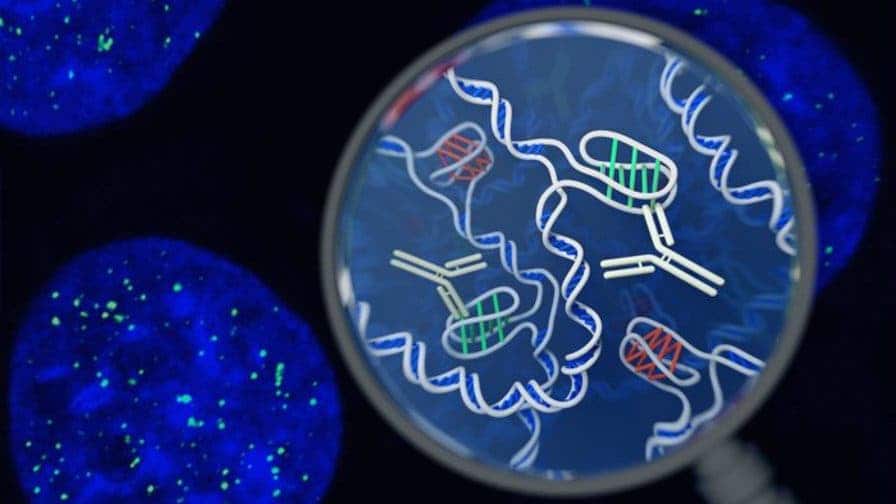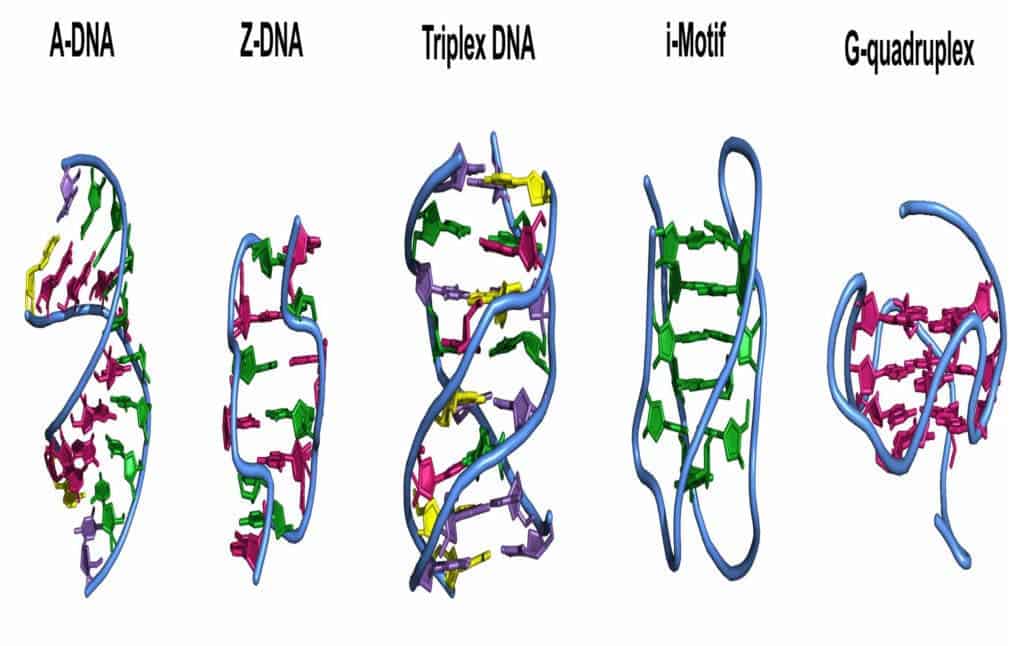You’re familiar with the famous double-helix structure of DNA (dsDNA) but that’s not the only structure there is. The molecule that contains the instructions an organism needs to develop, live and reproduce actually comes in multiple forms, including A-DNA, Z-DNA, triplex DNA and Cruciform DNA. These have only been seen in the lab so far, however. Now, in a breakthrough research, scientists report seeing for the first time so-called intercalated or i-motif DNA in human cells. Previously, this rare DNA structure was only witnessed in vitro, rather than in live cells.

The i-motif DNA structure. Credit: Garvan Institute of Medical Research.
Instead of a twisted track, i-motif DNA resembles a twisted knot. Australian researchers at Sydney’s Garvan Institute explored whether i-motif existed in living cells by developing an antibody fragment called iMab that would bind to it and no other form.
The antibody was visible thanks to its green fluorescent tag, showing how it came and went as the cells progressed through their cycles of division. Mahdi Zeraati, the first author of the new study, and colleagues could see green spots (i-motifs) appearing an disappearing over time, which suggested the novel DNA structure was forming, dissolving, and forming again. The findings generally indicate that transient i-motifs form late in the cell’s life cycle — more specifically, in the so-called G1 phase, when DNA is being actively interpreted.
“When most of us think of DNA, we think of the double helix,” said Daniel Christ, Associate Professor at Garvan, who co-led the research. “This new research reminds us that totally different DNA structures exist – and could well be important for our cells.”

Artist impression of the i-motif DNA structure. Credit: Chris Hammang.
Zeraati’s team injected the antibody into a variety of cells and found that it appeared in several targets across the cells. It mostly stayed away from the parts that code for proteins, and instead was involved in regulatory regions that switch genes on and off (promoters) and telomeres (chromosome tips).
Previously, in 2013, scientists had identified another kind of DNA structured called G-quadrupled (G4) DNA in human cells. Scientists had also used an engineered antibody to reveal the G4 DNA structure within live cells.
“We think the coming and going of the i-motifs is a clue to what they do. It seems likely that they are there to help switch genes on or off, and to affect whether a gene is actively read or not,” Zeraati said.
What’s perhaps the most shocking part about i-motif is its structural rules or, rather, blatant disregard for them. Genetics 101 says that DNA follows some strict base-pairing rules where adenine (A) always binds to thymine (T), and cytosine (C) always hooks up with guanine (G). However, in the knot structure, C letters on the same strand of DNA bind to each other.

Various alternative DNA shapes.
In the future, Zeraati and colleagues will attempt to learn what exact functions these DNA structures serve inside our bodies. Also, perhaps other alternative DNA conformations exist in human live cells, as well, such as A-DNA, Z-DNA, triplex DNA, and cruciform DNA. Such discoveries might open the gates for a new age of genetic research.
The findings appeared in the journal Nature Chemistry.









